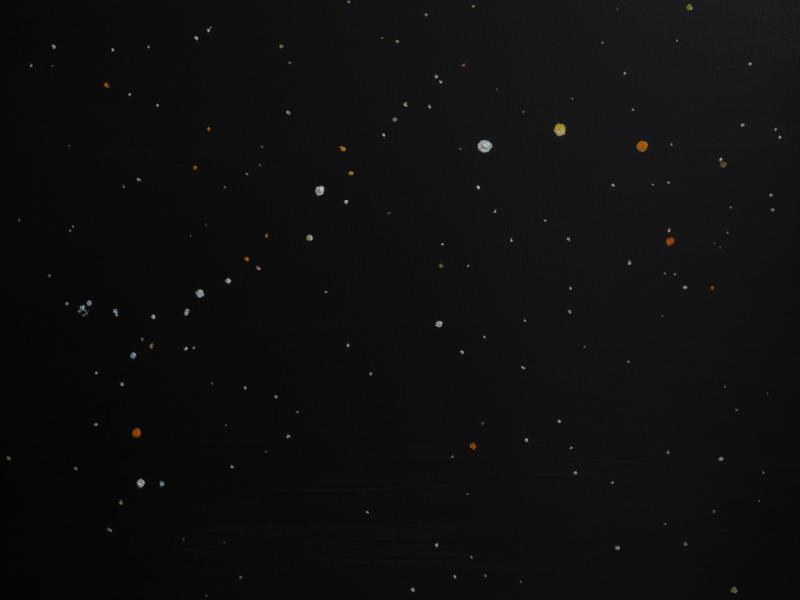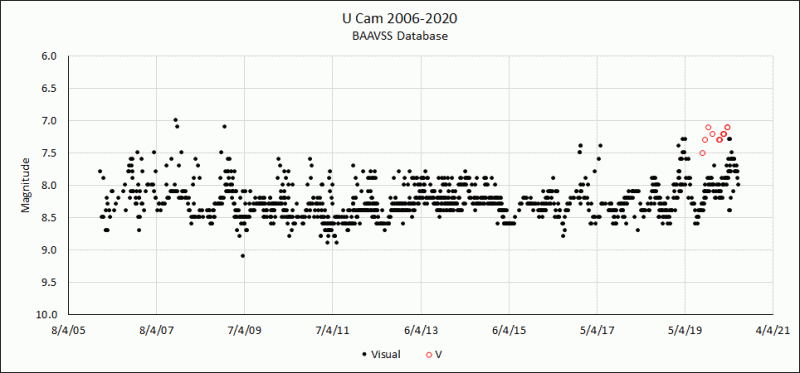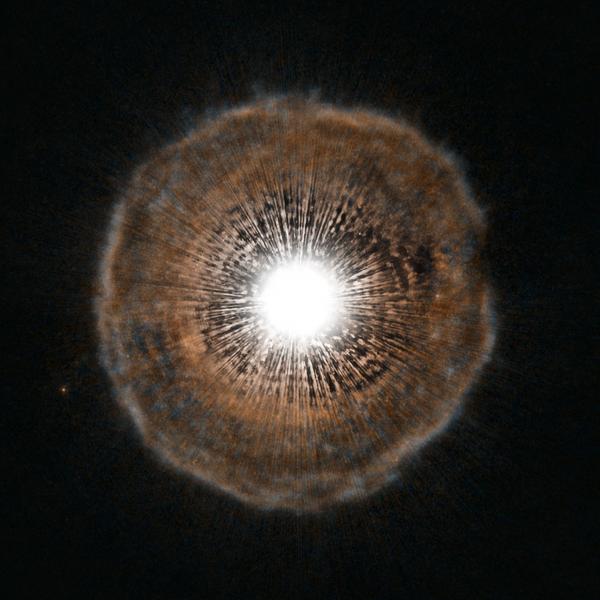Observing carbon stars with large binoculars
2020 October 1
Thinking back to my teenage years in the 1970s, one memory that sticks in my mind is a recommendation by a certain Patrick Moore. He advocated that rather than buying a small telescope, the first instrument that the prospective amateur astronomer should purchase was a pair of 50mm binoculars. With these one could learn the skies, sweep the Milky Way and identify numerous brighter deep sky objects.
Moving forward to today, there have been huge developments in astronomical binoculars, with a plethora of larger 70, 80 and even 100mm+ examples being available. These enable fainter stars and deep sky objects to be observed, and in finer detail.
The offset to larger binoculars is that their higher magnification (typically ×15–25) makes them more difficult to hold by hand. When holding larger binoculars, do so at the balance point, which lies towards the objective lenses. Where possible I lean against a wall, fence or car roof to steady the view. For extended observing of objects, or certainly when using 100mm+ instruments, it is essential to mount them on a tripod. The issue here is that trying to view above 45° in altitude becomes difficult. To solve this, observers can use a parallelogram-style mount or opt for more expensive versions installed with 90° prisms.
‘Kemble’s cascade’ & U Camelopardalis
The question arises on what to observe with larger binoculars. For me, they are fantastic instruments for sweeping up beautiful star fields and colourful stars. One of my favourite regions, in the constellation of Camelopardalis, has been given the name ‘Kemble’s Cascade’. This asterism was named by Walter Scott Houston in honour of Father Lucian Kemble (1922–1999), a Franciscan friar who, writing to Houston in 1980, described it as ‘a beautiful cascade of faint stars tumbling from the north-west down to the open cluster NGC 1502’, that he had discovered using a pair of 7×35 binoculars. Houston was so impressed with the asterism that he wrote an article which appeared in his ‘Deep Sky Wonders’ column for Sky & Telescope magazine in 1980. I should add that back in the 1970s I, then in my teens, drew attention to this beautiful field. If only I had written to Houston, who knows? It may have been named after me.

Through my 20×80 binoculars the cascade appears as a line of 20+ colourful stars spanning approximately 3°, that flow down to NGC 1502. A painting by me, from drawings, depicts the cascade and shows stars to about magnitude +10.5 (Figure 1).
Lying just to the west (preceding) of the north end of the asterism lie three brighter fifth magnitude stars; south of the westernmost lies the fascinating variable star U Camelopardalis. This star is listed in the VSX catalogue as a semi-regular SRb-type variable, with magnitude range 7.0–9.4V, spectral type C3,9-C6,4e(N5) and period of 2,800d (7.67y). In comparison, notes in the General Catalogue of Variable Stars give three periods: 435.45, 233.17 & 3,000d. A chart to identify the star and make magnitude estimates can be downloaded here. A light curve covering the period 2006 to 2020 is shown in Figure 2. The data shows a dominant period of 2,800d, confirming the VSX catalogue. In addition we find a second, longer period of 2,026d together with a shorter period of 219.5d.
Carbon stars
SRb stars are old red giants that lie on the asymptotic giant branch (AGB) of the HR diagram. The fascinating thing about U Camelopardalis is its spectral class, being a carbon star.
Normally stars on the AGB burn by fusing hydrogen into helium in what is known as hydrogen shell burning. However in periods of between 104 and 105 years, the temperature rises sufficiently to cause a helium flash. Helium is then converted into heavier elements, including carbon. This causes the star’s luminosity to rise; material from the interior is dredged up by convection to the surface and the star expands. As it does so it cools, helium burning ceases and hydrogen burning recommences. However, in the process material is lost from the star’s tenuous outer envelope. Over time the star may lose a significant fraction of its mass – in many cases over 50%. Eventually it runs out of material and we are left with the hot condensed core left bare (a white dwarf), and possibly an associated planetary nebula.

In the case of carbon stars there is an excess of carbon over oxygen in the outer envelope, allowing carbon molecules, including CO, to form. These block light from the bluer end of the spectrum, resulting in the reddening of the star. If our eyes were sensitive to the infrared K-band, U Cam would appear as a star of 0.37 magnitude; as bright as Betelgeuse! Below is a spectacular Hubble Space Telescope image of U Cam (Figure 3), showing the sphere of material cast off by the star some 800 years ago, over a period of 50–100 years. It should be noted that the star itself is massively over-exposed and in reality would only occupy a single dot of print.

I invite everyone to take a look at not just this star, but other carbon stars. Download charts from the BAA Variable Star Section website and make an estimate of their brightness by comparing them to the magnitudes of comparison stars. By submitting your estimates, you are contributing to our analysis and understanding of these rare stars. Below is a table showing a selection of other carbon stars on the VSS program. The red/orange colouration for the brighter stars will be visible in binoculars; others will require a telescope. One of these is the small-amplitude variable UV Cam, which lies below the southern tip of Kemble’s Cascade.
Colours vary, not only according to the star but also how the individual perceives colour. There are stars described as cherry, garnet, mahogany and sangria. S Cephei is my personal favourite – it has the most intense chocolate-red colour. 45 years ago, I took my first look at carbon stars and was hooked for life.
Shaun Albrighton, VSS Pulsating Star Secretary
References
1 100 Carbon Stars https://astroleague.org
2 Lindqvist M. et al., A&A, 351, p.L1–L4 (1999)
| The British Astronomical Association supports amateur astronomers around the UK and the rest of the world. Find out more about the BAA or join us. |
